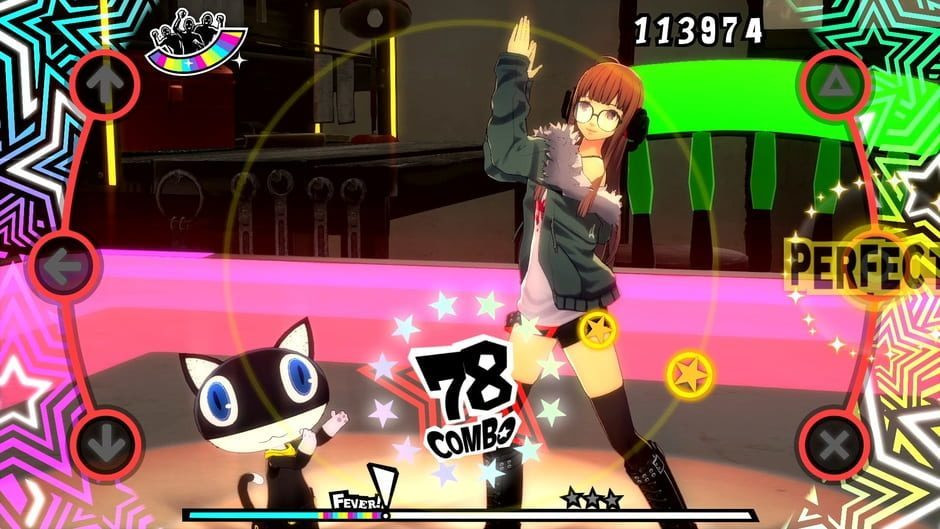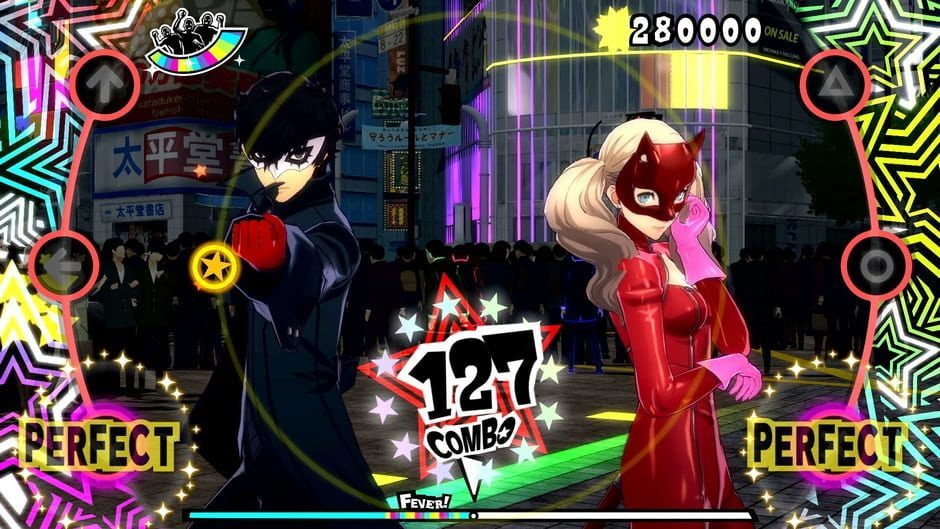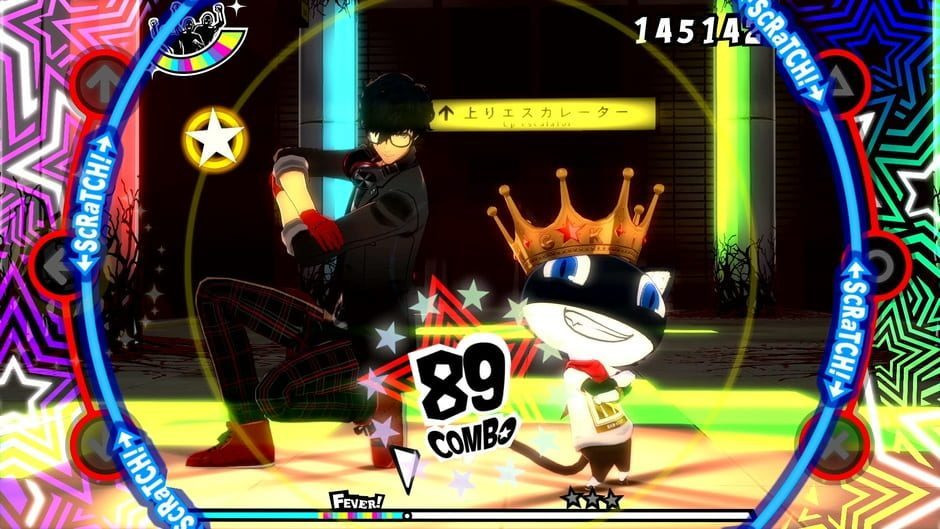 image
image
Persona 5 Dancing in Starlight, developed and published by Atlus, is a rhythm game spin-off that revisits the stylish world and captivating music of Persona 5. As a successor to Persona 4 Dancing All Night, expectations were high, especially given the latter’s passionate approach to blending rhythm gameplay with a compelling narrative. However, Persona 5 Dancing in Starlight unfortunately steps onto the dance floor with less fervor, feeling more like a competent but somewhat uninspired routine. While fans of the Persona 5 soundtrack may find enjoyment, it lacks the heart and finer details that elevated Persona 4 Dancing All Night, ultimately revealing itself as a spin-off primarily designed to capitalize on the fanbase.
 image
image
One of the most significant departures from its predecessor is the absence of a dedicated story mode in Persona 5 Dancing in Starlight. Replacing it is a series of social scenes, unlocked through various in-game achievements, such as hitting specific note milestones, experimenting with gameplay modifiers, or simply progressing through other social interactions. This structural shift marks a notable step away from the narrative depth of Persona 4 Dancing All Night. While this change might streamline the experience for players seeking a more direct rhythm game, and encourages diverse play styles, it undeniably sacrifices a key element that made the previous title so engaging.
This alteration significantly diminishes the contextual richness and stylistic flair that Persona 4 Dancing All Night masterfully delivered. Persona 5 Dancing in Starlight establishes itself early on as a lighthearted, almost inconsequential side story, devoid of any significant narrative weight. The social scenes hint at an overarching concept—a dance-off between the Velvet Room residents from Persona 3 and Persona 5, seemingly inspired by the events of Persona 4 Dancing All Night. References to the main storyline of Persona 5 are sprinkled throughout, and there’s an attempt to inject thematic depth by reiterating the “revealing your true self” motif within the dance performances.
 image
image
Further contributing to the underwhelming presentation are the social scenes themselves. Instead of utilizing the visual novel-style portraits characteristic of the Persona series, Persona 5 Dancing in Starlight opts for minimally expressive 3D models. This choice results in an awkwardness in every interaction. The dialogue attempts to emulate the visual novel format, but feels misplaced and unnatural when paired with stiff character models that highlight graphical shortcomings. While this approach likely reduced development costs, it unfortunately cheapens the overall feel of these scenes, despite commendable voice acting performances.
Even if the social scene presentation could be overlooked, the core rhythm game component of Persona 5 Dancing in Starlight unfortunately echoes this sense of budget constraints. The choreography is acceptable, with each character exhibiting a distinct dance style, but the environments are directly reused from Persona 5 and feel starkly empty. While a few tracks feature more elaborate staging, the majority of dances unfold in what feels like vacant rooms, relying on particle effects and camera movement to inject some dynamism into otherwise static backgrounds.
 image
image
The musical selection in Persona 5 Dancing in Starlight is a mixed bag. Shoji Meguro’s original compositions undeniably carry the weight, injecting much-needed energy into dance sequences that often lack visual excitement. This inherent energy makes the remixes at least functional, with a few standing out as genuinely enjoyable. However, the soundtrack as a whole fails to evoke the same emotional resonance as the music from Persona 3 and Persona 4.
Adding to the sense of a less-than-complete package, Persona 5 Dancing in Starlight features a relatively limited tracklist of approximately 25 songs, several of which are remixes of the same base tracks. While track count isn’t always everything, in this case, it emphasizes the game’s barebones feeling, especially when considering the numerous robust rhythm games released recently. Many competitors in the genre offer nearly double, or even quadruple, the number of songs, providing a far broader musical landscape. Persona 4 Dancing All Night compensated for a potentially smaller tracklist with a substantial story mode and high production values. Stripped of that narrative anchor, Persona 5 Dancing in Starlight‘s restricted and repetitive song selection becomes significantly more noticeable.
 image
image
To draw a comparison, if Persona 4 Dancing All Night felt like a full-fledged musical, building story momentum until characters naturally transitioned into dance, then Persona 5 Dancing in Starlight resembles a high school talent show. One provided the necessary ceremony and context to fully immerse players in the music, allowing them to relive cherished moments through its soundtrack. The other, while perhaps showcasing some genuine talent, ultimately suffers from poor presentation, akin to experiencing those talents through the underwhelming acoustics and harsh lighting of a school gymnasium.
Even for those who weren’t particularly enamored with Persona 5 itself, the game’s soundtrack and characters are undeniably strong and worthy of revisitation. However, Persona 5 Dancing in Starlight doesn’t quite do justice to either of these elements and ultimately falls short as a compelling rhythm game experience. The Phantom Thieves might be master thieves in their own world, but in Persona 5 Dancing in Starlight, they unfortunately fail to steal your heart in the same way.

